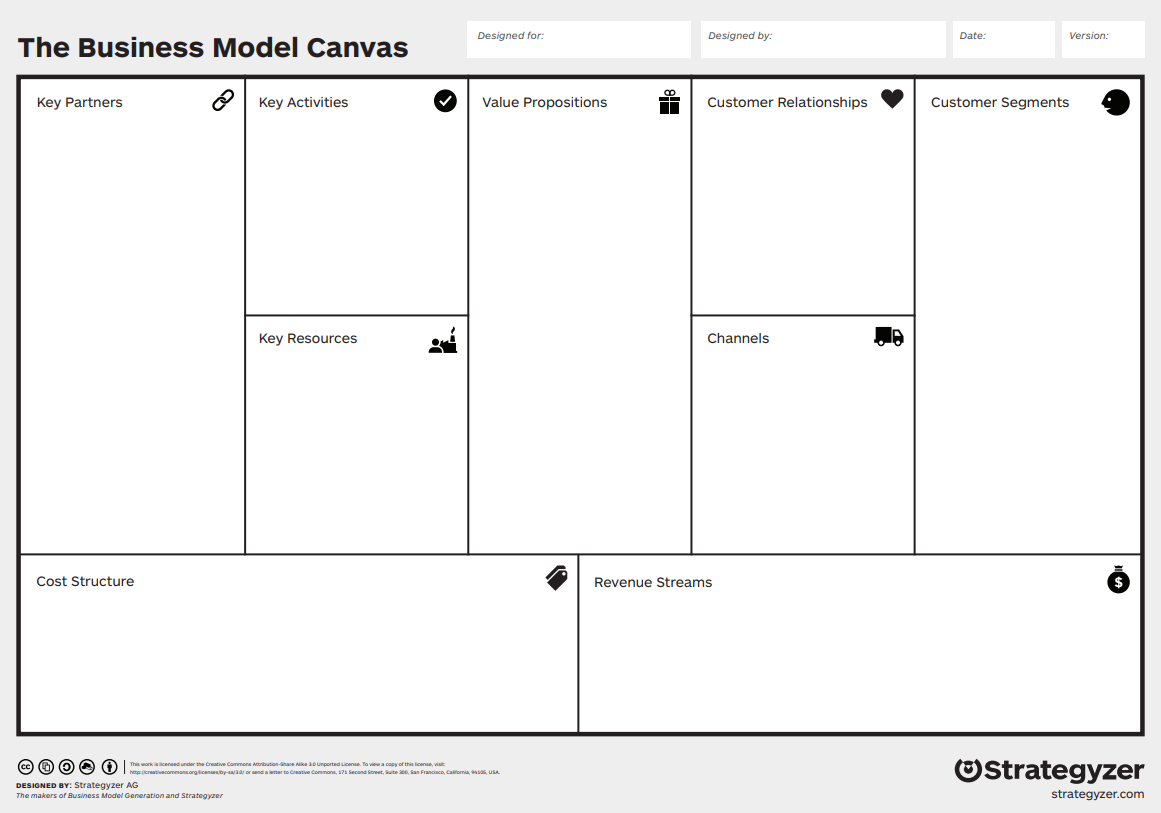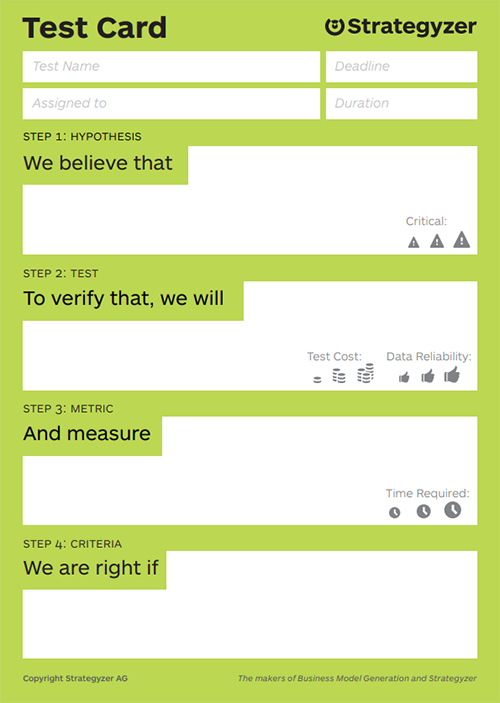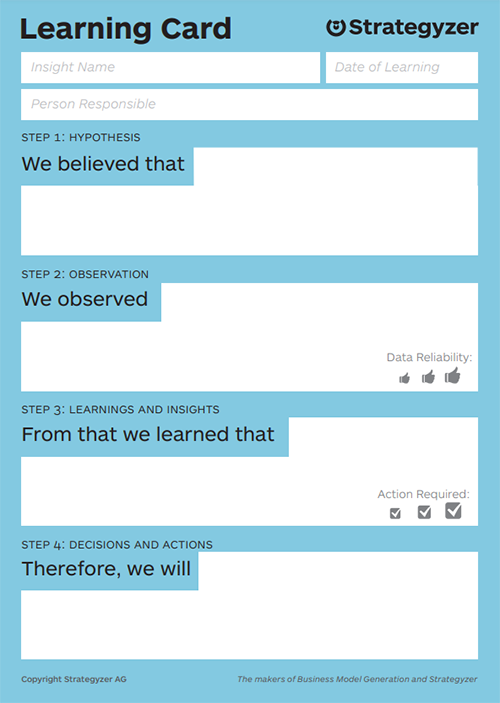Customer
Claus’ customer is one of the business divisions in Grundfos.

Grundfos needed a strong project manager to verify the business rationale on a new digital customer tool to select advanced solution on-line. Claus was hired to the job. I was impressed by the energy and the analytics that Claus used to get on-boarded and also onboard the team. You clearly feel the year of experience in the structures approach to the job, stakeholders etc. Claus quickly got an overview of the purpose and deliverables of the task.
Claus also has a strong toolbox of method to analyze the task at hand. Claus made a strong plan with the objective in mind and the resources at hand.
He work very closely with the key stakeholder to be sure that alignment of the deliverables are done and to quickly mitigate issues that might be hindering obtaining the end result.
On top Claus is honest, openminded and frank in his approach to the team and the stakeholders. Claus has the best recommendation from me.
Michael Skovgaard
Sen. Director Grundfos Industry
Note: Grundfos has approved the sharing of the content below.
Strategic context
Grundfos’ 2025 strategy (publicly available) drives its purpose of pioneering solutions to the worlds water and climate challenges, via major transformations in the business and by ensuring strong fundamentals on how business is done:

Copyright © Grundfos 2022
Purpose of Claus' assignment
In the pursuit of further advancing the Division as the leader in the market for water solutions, Claus is assigned together with a strong core team, to drive the validation of an ambitious business model based on an advanced digital self-service offering, providing the customers with a full and seamless end-to-end customer journey selecting, configurating, purchasing, commissioning and servicing full Water Solutions. This business model will be referred to as “Future Reach” in the rest of this article.
The rationale is to validate the business model before investing in an implementation.
The business model validation
Claus cannot disclose any details on the specific business model, but will here share the principles and strategies behind our approach to the model validation.
Background
Before the initiation of the business model validation initiative, the Grundfos division had done the initial homework, running Customer Exploration experiments in the form of e.g., Customer Interviews, providing insights on Customer Opportunities (jobs/needs, pains, gains/desires).
These Customer Insights combined with the strategic context, forms the basis for the Future Reach business model hypothesis.
The Product Vision
Knowing the importance of providing meaning and direction, we start formulating the Vision for the Product (the self-service offering) . As always – it is challenging to get the Vision sharp and right, but when done it looks easy.
Product Vision
The Product Vision serves the purpose of
- providing meaning
- keeping us focused on the customer
- acting as a Guiding Star providing the overarching / common goal / larger purpose across the organization
- helping teams understand how their work contribute to the large whole
- providing enough clarity enabling the product organization to have an architecture in place – but – do not build a full architecture in one massive effort (start with a Minimum Viable Architecture)
- an evangelism tool
Elements in the creation of the Product Vision
- leverages industry & technology trends
- if done well, it’ll be compelling, inspiring and empowering
- needs not to be too detailed / prescriptive which can be a challenging balance
- has a 3-10 years scope
- includes a description of the future situation which could include conceptual high-fidelity prototype (realistically looking but only smoke & mirrors), video, storyboarding, prototypes used in product discovery etc.
What the Product Vision explicitly is not
- a roadmap of features & projects
The Product Strategy
Tied closely to the Product Vision, is the Product Strategy.
Product Strategy
The Product Strategy serves the purpose of
- guiding which problems should be solved in what sequence
Elements in the creation of the Product Strategy
- tough choices on what is really important (the important focus as highlighted by Christina Wodtke)
- generation of insights
- quantitative insights: Product data, hypothesis test on data
- qualitative insight: User research
- evaluative insight: Result from tests
- generative insight: Did we uncover new opportunities?
- technology insights: The empowered engineers are often the best to spot new enabling technologies
- industry insights: E.g., follow the best industry analysts
- active management (Servant Leadership not to be confused with micro-management): The product leaders must connect the dots / insights in various ways resulting in action; that is, which team should solve which problem (the Objective in OKR)
- remove impediments
- 1:1 – weekly tracking (e.g., OKR) and coaching
Logically the Product Strategy can be seen as a four-step process;
- focus, that is select a small number of truly important company objectives driving the Product Strategy
- generate insights
- action by deciding which Product Teams will work on which Objectives (Problems), allowing a mixed top-down and bottom-up approach
- active management
What the Product Strategy explicitly is not
- a blank check for the teams to do what they prefer to do
- a roadmap of when to deliver what features – just like the Vision is not such a roadmap
A Product Strategy is not the classic feature roadmap. It is the overall guidance of the steps / objectives towards realizing the Product Vision. How this Product Strategy is formulated is of course highly dependent on the specific business- and technology context. We’ll shortly return to the Goal Setting in the Product Strategy, using the OKR method.
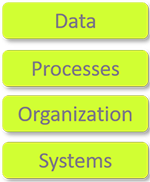 Being an advanced digital self-service offering (providing the customer with all the physical and non-physical items in a Water Solution), we’ll naturally have touchpoints in four key areas when bringing the offering the the market:
Being an advanced digital self-service offering (providing the customer with all the physical and non-physical items in a Water Solution), we’ll naturally have touchpoints in four key areas when bringing the offering the the market:
- Valid data driving the customer experience
- The customer-facing processes driving the end-to-end customer journey and the internal processes making things happen (being it automatically or human-driven processes)
- The organization needs to have the structure and competences needed to run the Future Reach business model
- Relevant (parts of) the IT-stack needs to be in place
The high-level structure of our Product Strategy
We want to be able to bring the first increment of the Product Vision to the market as fast as possible for a number of reasons e.g.,
- we want to maintain and increase the already existing market leadership for Water Solutions
- we want to initiate the market feedback loop (beyond the hypotheses tests – see later)
The first smallest possible product increment would unfortunately by many be described as “an MVP”, which it is not. Marty Cagan elaborates on the confusion:
The MVP should be a *prototype*, not a product.
Yes – we’ll be using prototypes as the basis for our hypotheses tests – more to come later.
Going forward we’ll refer to each major product increment as a Product Goal, expressed using the OKR (Objectives & Key Results) method. What we here describe as an “Objective” is equal to a (hard) business / customer problem. It’ll be the job for highly empowered, cross-functional product teams to discover the best solutions to these business / customer problems.
OKR - Objectives & Key Results
The OKR framework has these overall characteristics:
Objective – where you want to go
- Is qualitative
- Must be easy to understand
- Short and to the point
- Describe what needs to be achieved and importantly – why – the rationale
- Be inspiring and motivating
- Aspirational & challenging
- 1-4 objectives per team
Key Results – how you measure the progress towards the Objectives
- Is an outcome
- Specific and time-bound
- Measurable and verifiable
- Aggressive – yet realistic
- Is quantitative, preferable as “from to”
- 1-5 KR per Objective
For us to be able to move fast – and act fast on new insights from the market – we’re applying a “vertical slicing” approach.
Let’s say that one of our product teams has been tasked with the discovery (and implementation) of the best solution for our Product Goal #1. The mindset of this team is to change and be dependent of as little as possible.
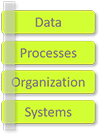 The product team will for each of the four key areas identify the gaps and what need to be changed to meet their Objective. The team thus does a vertical slicing across the four key areas.
The product team will for each of the four key areas identify the gaps and what need to be changed to meet their Objective. The team thus does a vertical slicing across the four key areas.
For Product Goal #2 – the next product increment – the exact same principle applies.
This principle is illustrated below.
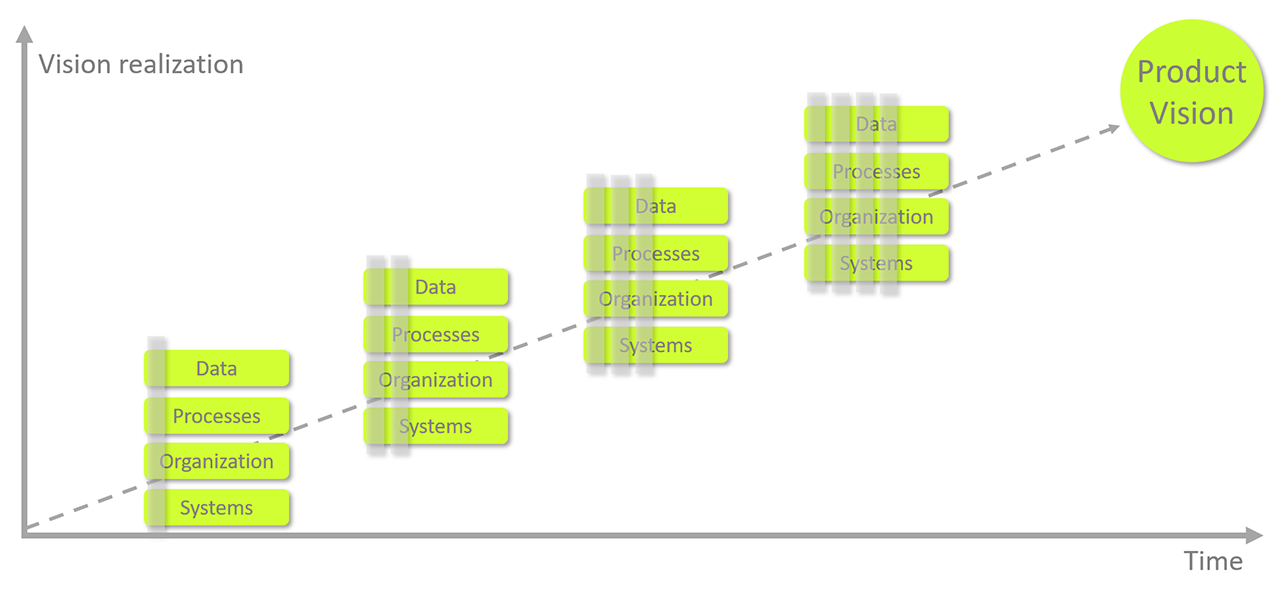
The Business Model Canvas
Having understood, aligned with key stakeholders and communicated (this need for continuous evangelism never stops) the Product Vision and -Strategy, our next step is to structure our top-level hypothesis, being
“We believe that we have a valid Future Reach business model, being Desirable for our customers, Feasible for us to implement and operate and Viable for our business”
To that end we’re using the Business Model Canvas.
The Business Model Canvas can logically be grouped in three hypotheses areas Desirable, Feasible and Viable
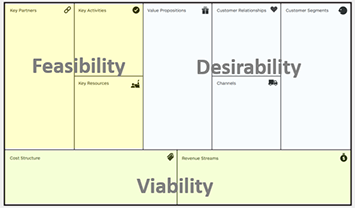
BMC Desirability, Feasibility & Viability
Desirability
Customer Segments – we believe ..
- we are targeting the right customer segments
- the segments we are targeting exist
- the segments we are targeting are big enough
Value Propositions – we believe ..
- we have the right value propositions for the customer segments we are targeting
- our value proposition is unique enough to replicate
Channels – we believe ..
- we have the right channels to reach and acquire our customers
- we can master the channels to deliver value
Customer Relationships – we believe ..
- we can build the right relationships with customers
- it is difficult for customers to switch to a competitor’s product
- we can retain customers
Feasibility
Key Activities – we believe that we ..
- can perform all activities (at scale) and at the right quality level that is required to build our business model
Key Resources – we believe that we ..
- can secure and manage all technologies and resources (at scale) that are required to build our business model, including intellectual property and human, financial and other resources
Key Partners – we believe that we ..
- can create the partnerships required to build our business
Viability
Revenue Streams – we believe that we ..
- can get customers to pay a specific price for our value propositions
- can generate sufficient revenue
Cost Structure – we believe that we ..
- can manage costs from our infrastructure and keep them under control
Profit – we believe that we ..
- can generate more revenues than costs in order to make a profit
Copyright © Strategyzer
For us to validate the top-level hypothesis, we thus need to validate the Desirability-, the Feasibility- and the Viability sub-hypothesis.
In this article Claus will “only” address the principles behind Desirability hypothesis work, leaving the Feasibility and Viability hypotheses for a potential future article.
The Desirability hypothesis
It does not come as a big surprise, that we first and foremost need to validate, that what we provide to the customers
- provide Value (to the customer)
- is Useable (for the customer / the users)
If we fail here, then the rest of the business model is rendered void. We thus need to ensure a strong Product/Market fit.
Product/Market fit
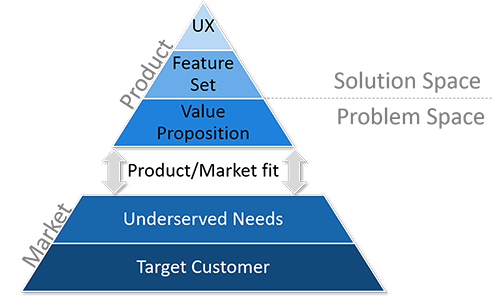
Inspired by Dan Olsen’s The Lean Product Playbook
For us to reach Product/Market fit, we need to have the two ends meet, (1) our Value Proposition and (2) the underserved needs in the market.
Just for the sake of clarity: getting to such a strong Product/Market fit is in no way a sequential process. It takes a lot of experiments and iterations, shifting between the Problem– and Solution spaces. The green arrows below illustrate exactly that:
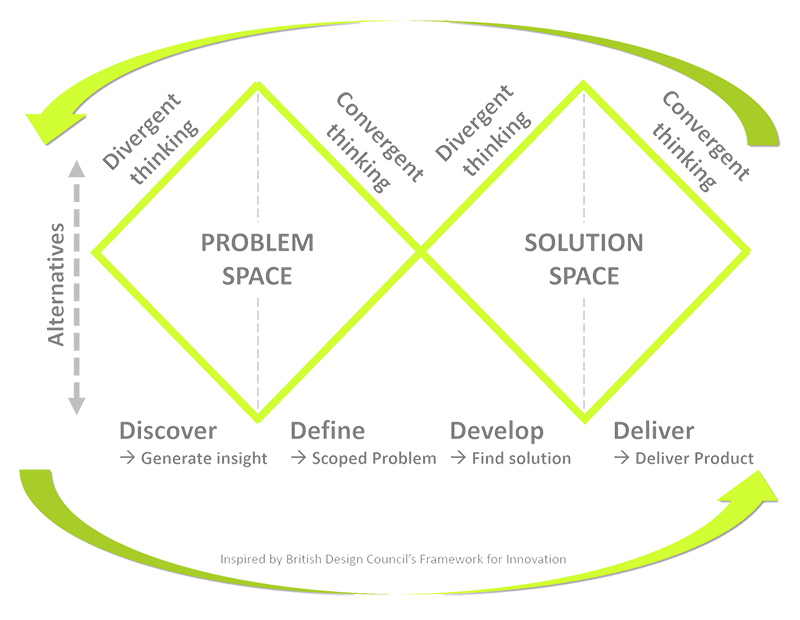
The service offering on which the Future Reach business model is build will never be finished (of course – it might some time in the future be terminated). Maintaining Product/Market fit is an ongoing quest.
Our next step is, based on the earlier collected Customer Opportunities, to decide on
- the customer segments / profile that we want to serve
- our value proposition to these customers
The Value Proposition Canvas helps us structure exactly that.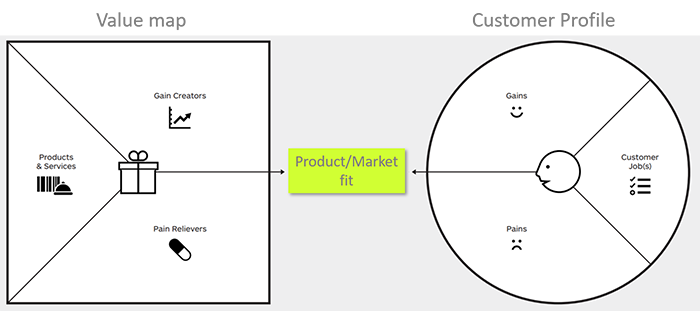
The Value Proposition Canvas
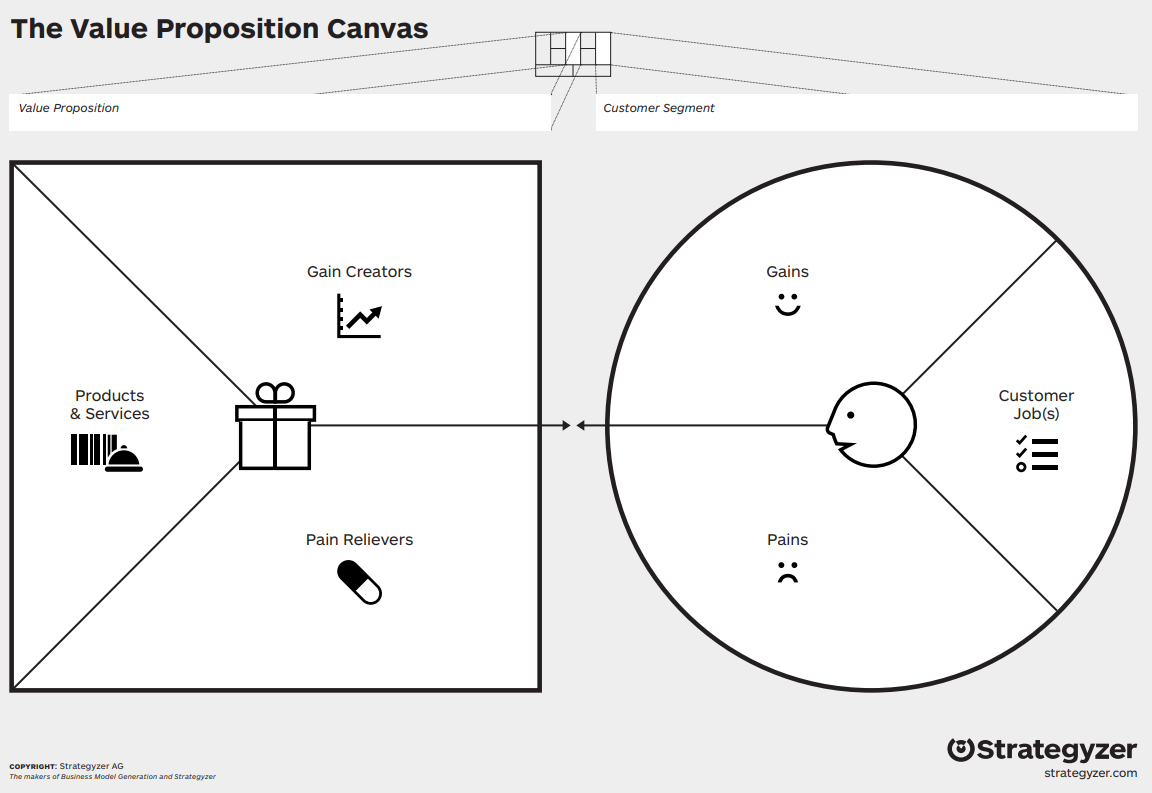
Customer profile – we believe that we
- are addressing jobs / needs that really matter to customers
- are focused on pains that really matters to customers
- are focused on gains / desires that really matter to customers
Value map – we believe
- our products and services really solve high-value customer jobs / needs
- our products and services relieve top customer pains
- our products and services create important customer gains
Copyright © Strategyzer
But- we’re not done yet having populated the Value Proposition Canvas. It still represents our assumptions. We need to go back to our customers and test the validity of these assumptions.
Realistically we cannot and should not spend the customers and our own time testing all assumption.
We’ll prioritize planning and doing structured assumption tests on important assumptions for which we do not yet have sufficient evidence to support them.
For the important assumptions with seemingly a high level of evidence, we’ll challenge ourselves on the evidence validity.
Now having decided on a few highly prioritized assumptions, the next step is to design and run the assumption tests with the customers.
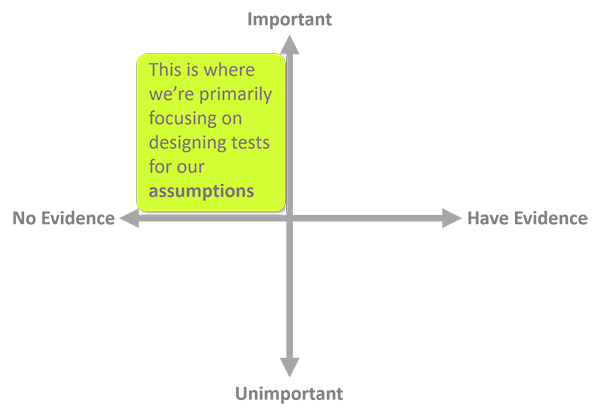
Inspired by Testing Business Ideas
Because Future Reach is a digital offering, we’re primarily using visual means to test our assumptions with customers.
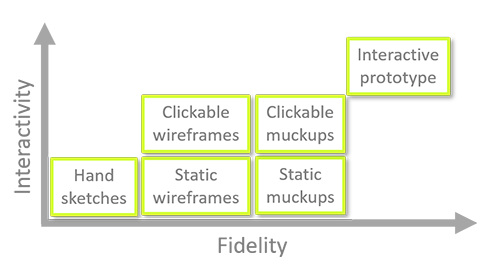
Inspired by The Lean Product Playbook
Inspired by Testing Business Ideas, we’re structuring and planning our test and insight follow-up using Test- and Learning cards.
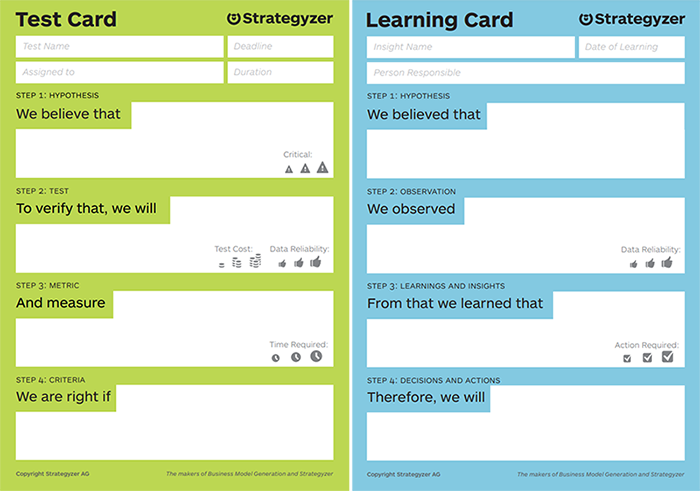
Wrap-up
As it is hopefully obvious by now, the mindset and tools used during the business model validation are a mix of Product Management, Project Management, Product Design an Engineering. You might want to visit Claus’ article on getting the best from Product- and Project Management. Using the phrase that Claus coined in that article, his role in this business model validation can best be described as Product Management ++.
Yes – we are (also) using selected elements from the “Agile Frameworks” like Kanban backlogs and daily (virtual) standups, but these are only details; not what makes us a success. Our relentless focus on wanting to understand and serve the real customer is what drives us.
And then what?
We’ve basically been through the first major iteration in what is often described as dual-track Agile:

Striving for the Product Vision realization, guided by the Product Strategy, entails the continuation of these iterations … or switching between Problem- and Solution spaces, if you will. The interaction with the real customers does not and must not stop after the initial business model validation.
Claus’ recommendation is to organize the realization of Future Reach as done by the best high-tech product-led companies:



